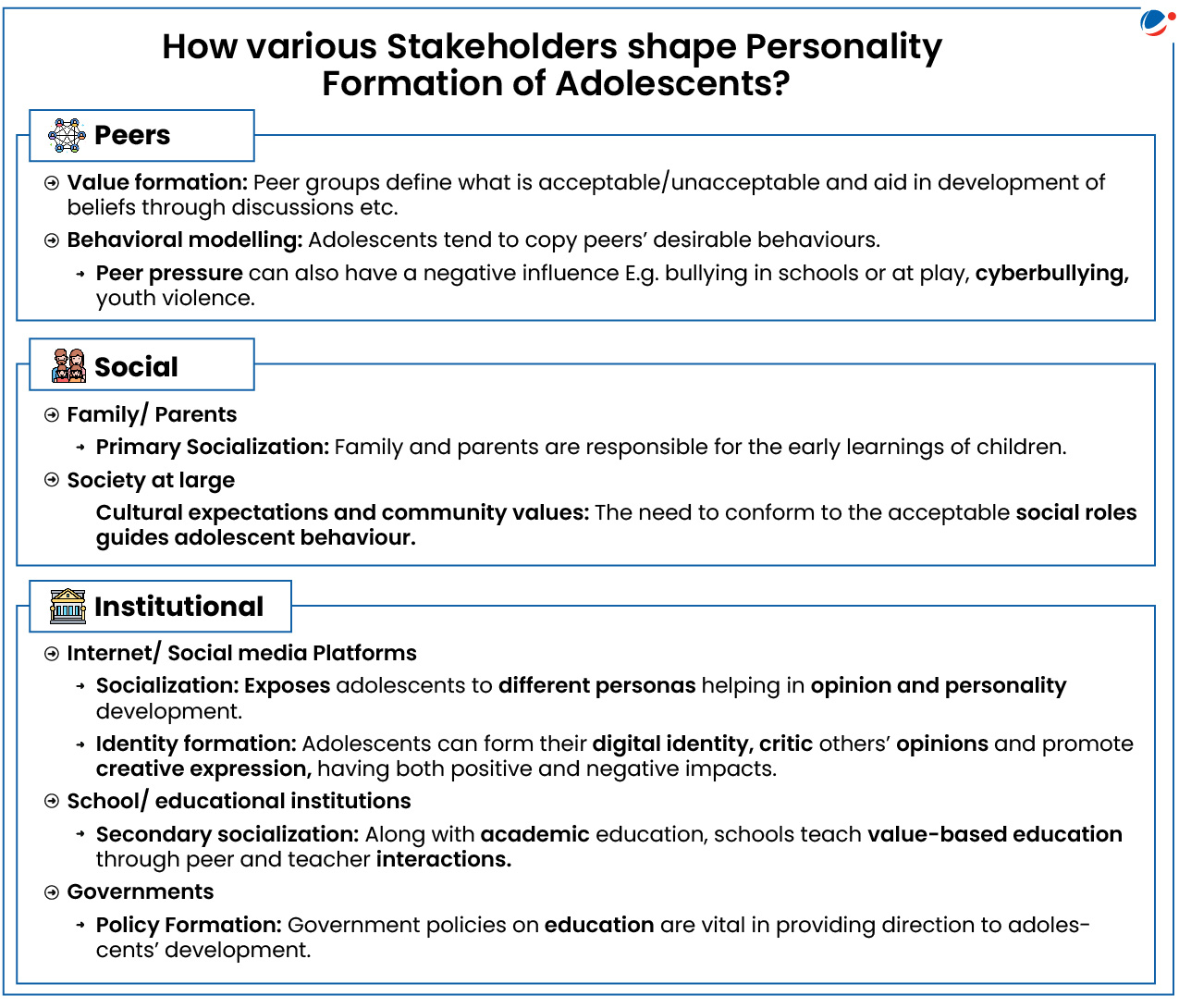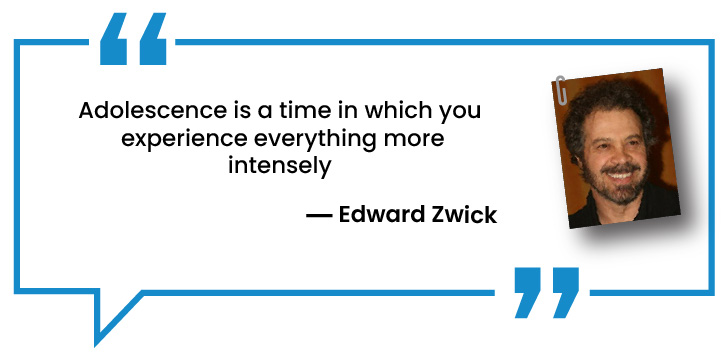Why in the News?
A recently released web series named 'Adolescence' has sparked debates worldwide on online radicalization and digital safety of adolescents- the issues faced by children due to unregulated exposure to internet and related social influences.

More on the News
- The UK is planning to stream the series in schools accompanied by discussion guides for teachers and parents.
- In 2024, Australia banned social media use for children less than 16 years of age citing online safety issues and holding social media platforms responsible for compliance.
Harmful Impact of Online Spaces/Social Media on Adolescents
- Negative Social Conditioning: Access to unregulated content potentially has a negative influence on adolescent's personality development and behavior.
- E.g. Pornography, misogynistic hate content encourages anger and hatred; beauty standards related content may induce self-doubt etc.
- Online radicalization: Social media algorithms tend to promote formation of 'echo-chambers' i.e. a community validating a thought process as being absolute.
- For example, forums and chat rooms promoting idea of 'manosphere'-justifying misogyny and toxic masculinity as a counter to feminist ideology.
- Social Media Addiction and Alienation: Prolonged use of online spaces disconnect children from real-world connections with their parents and peers leading to social isolation & alienation, making them vulnerable to online propagandas.
- Mental health issues: Adolescents, who are in the transitionary phase of identity formation, may face mental health issues like anxiety, depression, and body image insecurity.
- E.g. Comparison with idealized online persona, Fear of missing out (FOMO) and validation-seeking behaviours (likes and comments equated to self-worth).
- Lack of empathy & Cyber-Bullying: Most interactions in online spaces lack empathy which is reflected in the trolling, rude comments and posting of sensitive content detrimental to others.
- E.g. "Bois Locker Room" incident in Delhi (2020): obscene images were shared on a schoolboys' group.

What are the Challenges in curbing negative impacts of social media on Adolescents?

- Outdated policy approach: Rapid pace of changes in digital realm outpaces policy changes and make it difficult for the parents, social institutions like schools to adapt.
- Lack of Digital Literacy: Adolescents, having an autonomous agency online, lack the digital literacy to critically engage with content and provide an informed consent.
- Content moderation versus free speech: Regulation of social media platforms has been contentious due to the argument against regulation due to the democratic principle of free speech.
- Internet and social media have become an integral part of our lives for access to information, as a platform for self-expression and connecting people with shared identities and interests.
- Keeping children away from the exposure will be temporary and largely ineffective in the long-term.
- Loopholes in content moderation: Age-based content restriction is bypassed by loopholes exploited by access to dark web, piracy etc.
- Intergenerational Digital Divide: Adolescents, as digital natives, adopt new technologies quickly, while older generations may resist or misunderstand them. E.g. Indian parents misunderstanding emojis or memes.
- Cultural dilemmas arise when youth espouse liberal global values clashing with traditional Indian familial norms.
- Lack of awareness: Among parents, schools and society about the negative influences on social media. E.g. changing symbolic interactions through changing meaning of language terminologies and emojis.
Way Forward
- Promoting Digital Citizenship among adolescents: Digital citizenship is when you use the internet in a legal, safe, respectful and responsible way.
- Digital Ethics of Care: Learning the competencies of digital responsibility, digital empathy, digital care and kindness, and digital respect.
- Promoting Digital Literacy: Enabling children to make critical decisions and transforming them from passive consumers to active users.
- Parental Oversight: Parents need to promote open dialogue and provide better emotional support structures to prevent social alienation and loneliness.
- Reforms in School system: Better anti-bullying programs, counsellor support, partnership with parents, training teachers in understanding and handling the issues faced by adolescents better.
- E.g. including Relationship, Sex and Health Education (RSHE) curriculum, as in the UK.
- Policy Reforms: Adopting a multi-faceted approach, acknowledging that it is responsibility of all stakeholders (police, schools, social media firms, parents, society) to ensure children's digital safety.
- Education policies, juvenile justice laws and data protection laws need to cater to the specific needs of adolescents.
- Accountability for Tech Companies: Instead of banning social media, tech companies can be held accountable for creating safer, child-friendly spaces.







